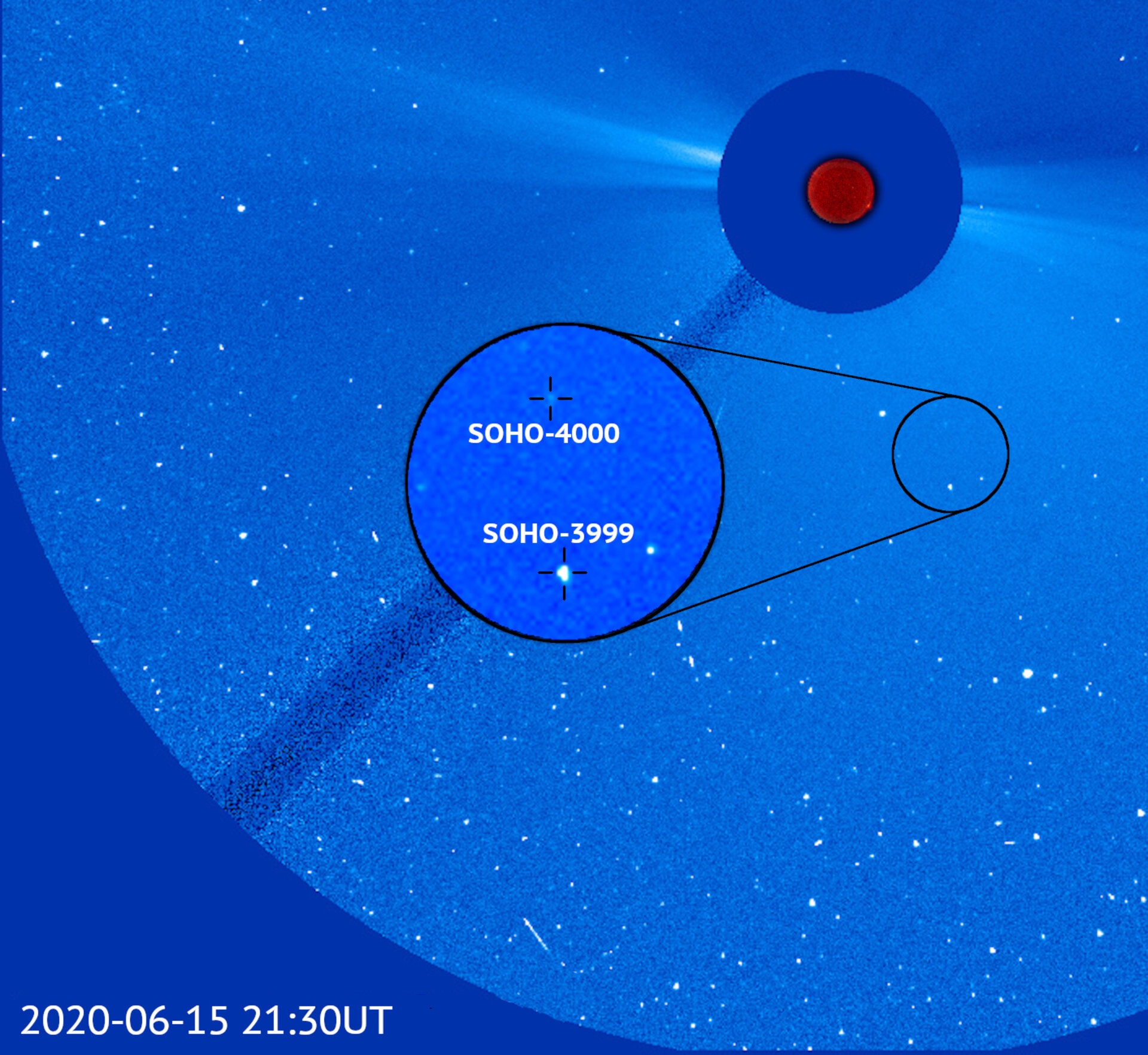Sungrazer comets
'Sungrazing' comets have been observed for many hundreds of years. These are comets which travel very close to the Sun, where they light up brightly and often break into smaller pieces.
In the late 1880s and 1890s, Heinrich Kreutz studied the comets which had been observed until then and determined that some were sungrazers and some were not. He also found that those which were indeed sungrazers all followed the same orbit.
That is, they were all fragments of a single comet which had broken up. It is probable that the original comet, and its fragments, had broken up repeatedly as they orbited the Sun with a period of about 800 years. In honour of his work, this group of comets was named the Kreutz sungrazers.
If they were to hit the Sun, they would become 'sunstrikers'. As far as is known, no comets have ever actually been seen to hit the solar surface, or the photosphere. The Kreutz sungrazers get to within about 50 000 kilometres of the surface, just passing through the lower regions of the solar atmosphere (the corona). Most simply evaporate in the hot solar atmosphere.
Sungrazing comets have been observed possibly as far back as the year 371 BC. A comet seen by Aristotle and Ephorus may have been a Kreutz sungrazer. However, until 1979, only nine sungrazing comets had been seen, all from ground-based observations.
Then, beginning in 1979, space-based observatories began to detect sungrazing comets. These observatories use instruments known as coronagraphs. A coronagraph is designed to look at the solar atmosphere, using a mask to create an artificial eclipse which hides the bright disk of the Sun.

The CP coronagraph on the NASA Solar Maximum Mission (SMM) discovered 10 sungrazing comets between 1987 and 1989. There is another coronagraph (actually three in one instrument) in space right now - the Large Angle Spectrometric Coronagraph (LASCO) on the ESA/NASA Solar and Heliospheric Observatory (SOHO).
Since the LASCO instrument was switched on, on 30 December 1995, it has discovered thousands of new comets, a large number of which belong to the Kreutz sungrazing group. The majority of the remaining comets belong to three new groups (the Meyer, Marsden and Kracht groups) that were discovered based solely on SOHO's LASCO observations. Kreutz comets approach the Sun ten times closer than comets from the three new groups.


